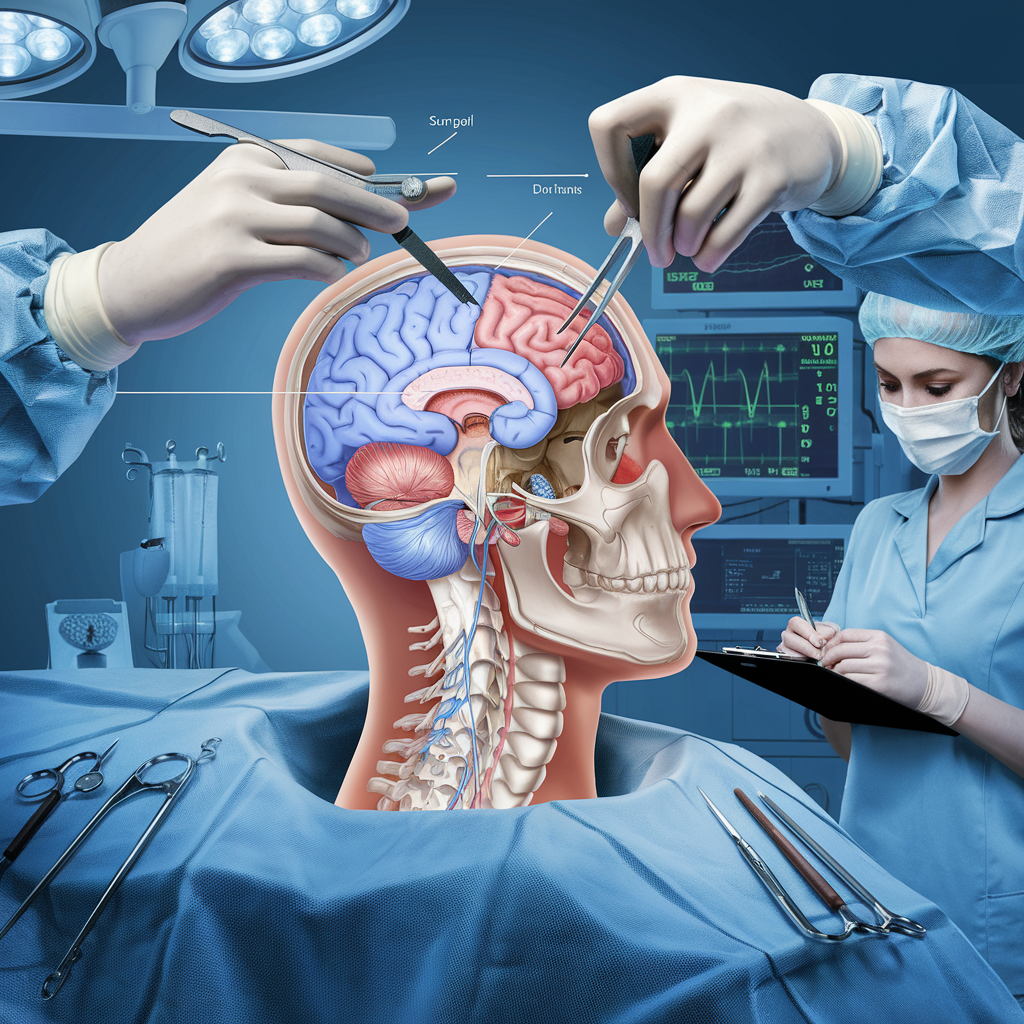Craniotomy NCP: Alright, let’s talk about something serious yet fascinating—craniotomy! Imagine this: Your brain is like a highly secure vault, protected by the skull, which acts like an unbreakable lock. Now, sometimes, due to tumors, injuries, or brain swelling, doctors need to temporarily open that vault to fix what’s inside. That’s where a craniotomy comes in!
Thank you for reading this post, don't forget to subscribe!
A craniotomy is a surgical procedure where a section of the skull bone (cranium) is removed to access the brain. Sounds intense, right? But don’t worry—modern medical advancements make this life-saving procedure safer than ever.
As a nursing student, your role in caring for a post-craniotomy patient is crucial. This is where the Craniotomy NCP (Nursing Care Plan) comes into play! Creating an effective Craniotomy NCP ensures that patients recover safely while minimizing complications like brain swelling, infections, and neurological deficits.
By the end of this guide, you’ll know exactly how to structure a well-planned nursing care plan, including:
✅ Patient assessment (Subjective & Objective Data)
✅ Nursing diagnoses (Prioritizing patient needs)
✅ Interventions & rationales (Why you’re doing what you’re doing)
✅ Nursing goals (Short-term & long-term recovery)
✅ Expected outcomes (Measuring progress)
So, let’s dive in and master the 7 critical steps to writing a perfect Craniotomy NCP! 🚀


1. Patient Information (Example Case Study)
Disclaimer: This is a fictional case study created for educational purposes. It does not represent any real patient.
| Patient Details | Information |
|---|---|
| Name | Mr. Rajesh Kumar |
| Age | 52 years |
| Gender | Male |
| Medical History | Hypertension, Diabetes Mellitus Type 2 |
| Symptoms | Severe headache, blurred vision, confusion, occasional seizures |
| Medical Diagnosis | Brain tumor (right frontal lobe) |
| Surgery Type | Craniotomy for tumor removal |
| Admission Date | 15th January 2025 |
| Care Plan Initiated | 16th January 2025 |
2. Comprehensive Nursing Care Plan for Craniotomy NCP
Now that we have our patient details, let’s break down the Craniotomy NCP step by step!
A. Nursing Assessment (Pre & Post-Op Considerations)
🩺 Subjective Data (What the patient reports)
- Severe headache (described as throbbing pain)
- Blurred vision and difficulty focusing
- Dizziness and nausea
- Feeling extremely tired
- Confusion and forgetfulness
📋 Objective Data (What the nurse observes)
- Vital Signs:
- BP: 160/90 mmHg (Hypertension)
- HR: 98 bpm
- RR: 20 breaths/min
- Temp: 37.5°C
- Neurological Status:
- GCS Score: 13/15 (Mild confusion, disoriented)
- Slurred speech & weakness on the left side
- Unequal pupil size (right larger than left)
- Hydration Status: Slightly dehydrated, dry mucous membranes
- Pain Assessment: 8/10 on pain scale
B. Nursing Diagnoses for Craniotomy NCP
💡 Nursing diagnosis is like making a “problem list” so that you can tackle each issue effectively.
1️⃣ Risk for Increased Intracranial Pressure (ICP) related to post-craniotomy swelling.
2️⃣ Risk for Infection due to open surgical site.
3️⃣ Impaired Physical Mobility related to muscle weakness and post-surgical pain.
4️⃣ Acute Pain related to surgical trauma.
5️⃣ Risk for Seizures due to brain irritation and post-op swelling.
6️⃣ Disturbed Sensory Perception related to temporary neurological deficits.
7️⃣ Risk for Impaired Skin Integrity due to long bed rest post-surgery.
C. Nursing Interventions and Rationales for Craniotomy NCP
🩹 Interventions are like the “game plan” for nursing care! Here’s what we do and why we do it:
| Nursing Interventions | Rationales (Why It’s Done) |
|---|---|
| Monitor vital signs closely (BP, HR, RR, ICP levels). | Increased BP or ICP can indicate brain swelling, which needs immediate attention. |
| Assess neurological status every 2 hours (GCS, pupil response, movement). | Helps detect early signs of brain deterioration or complications. |
| Keep head of the bed elevated at 30°-45°. | Reduces intracranial pressure (ICP) and promotes blood flow. |
| Administer prescribed pain medications (opioids or NSAIDs). | Helps manage post-surgical pain and improve comfort. |
| Perform wound care using sterile techniques. | Prevents post-op infections, which can be life-threatening. |
| Encourage passive and active range of motion exercises. | Prevents muscle stiffness, blood clots, and bed sores. |
| Provide seizure precautions (padded bed rails, reduce stimuli). | Lowers the risk of seizures due to brain irritation. |
D. Nursing Goals for Craniotomy NCP
🎯 What do we want to achieve?
1️⃣ Short-Term Goals:
- Maintain stable ICP levels within normal limits.
- Prevent post-op infections by ensuring sterile wound care.
- Control pain effectively with medication and positioning.
2️⃣ Long-Term Goals:
- Improve neurological function (speech, movement, memory).
- Regain independence in daily activities.
- Prevent complications like deep vein thrombosis (DVT) or pneumonia.
E. Evaluation and Expected Outcomes
📊 How do we measure success?
✅ ICP remains below 20 mmHg, indicating reduced swelling.
✅ No signs of infection (normal temperature, clean wound).
✅ Pain is reduced to tolerable levels (<3 on the pain scale).
✅ GCS score improves (patient becomes more alert).
✅ Patient regains mobility and can walk with assistance.
FAQs on Craniotomy NCP
1️⃣ What is the biggest risk after a craniotomy?
- The main concern is brain swelling and increased ICP, which can cause severe complications.
2️⃣ How long does recovery take?
- It varies, but most patients take 4-8 weeks for initial recovery, with full neurological recovery taking months.
3️⃣ What is the nurse’s priority after craniotomy?
- Monitoring neurological status and preventing complications like infections and seizures.
4️⃣ Can a patient talk after a craniotomy?
- It depends on the area of surgery—some may experience temporary speech difficulties.
5️⃣ How do you reduce swelling after brain surgery?
- Keeping the head elevated, using steroids, and monitoring ICP closely.
Recommended Resources
🔗 Craniotomy Post-Op Care Guide
🔗 Neurological Nursing Care Plans
🔗 Brain Surgery Recovery Tips
🚀 Now you’re all set to ace your Craniotomy NCP! Got questions? Drop them below! 👇


